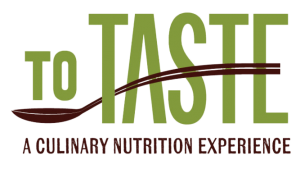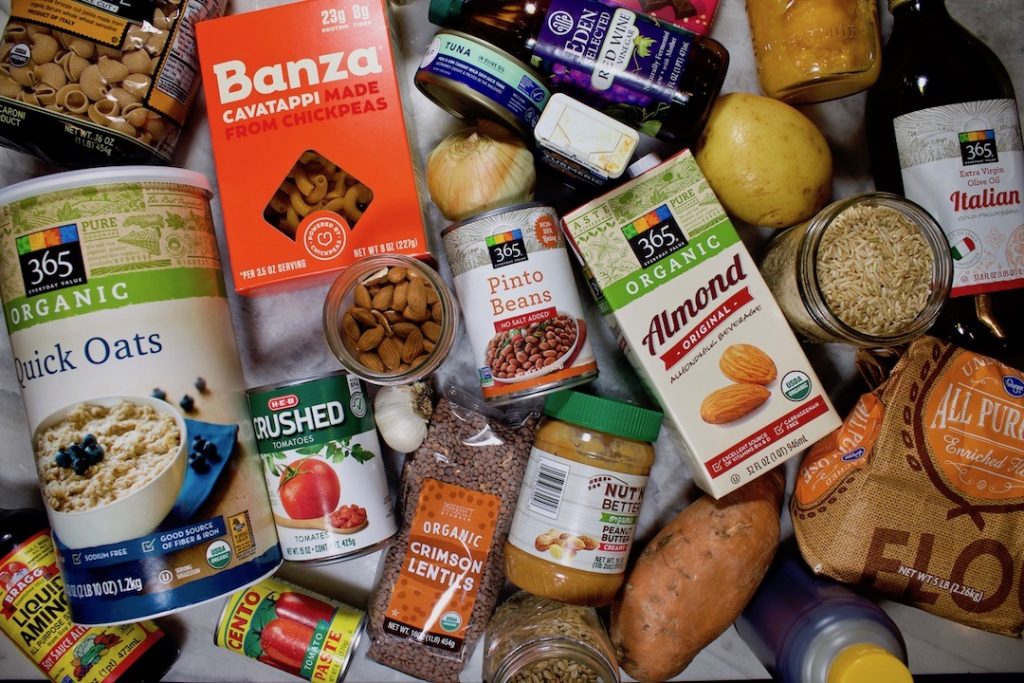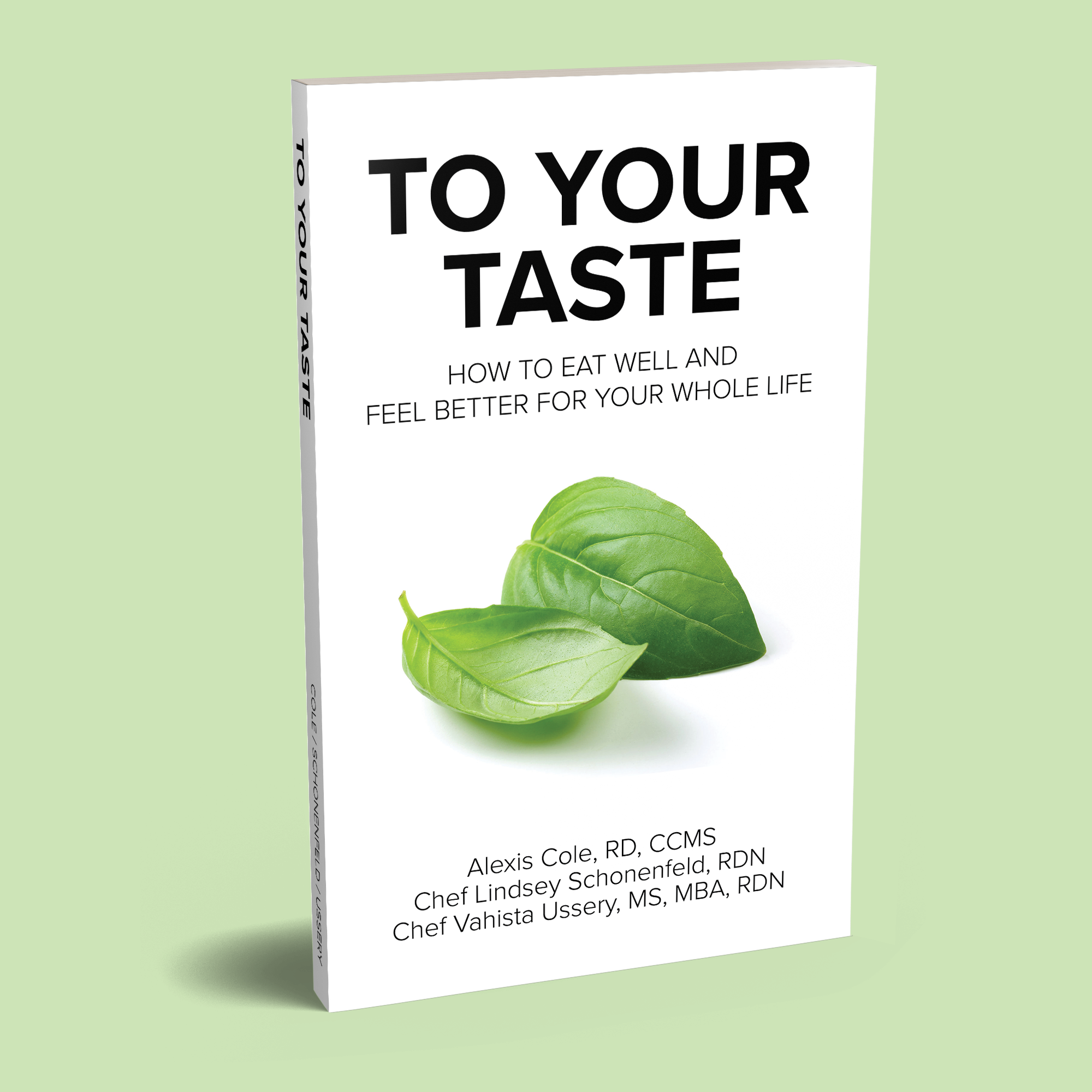Have you ever felt overwhelmed by the amount of nutrition information out there? Us too! Food trends come and go and nutrition myths can be confusing. What trends and ideas are worth holding on to? Which ones should we let go? In this article, we’ll discuss food trends & nutrition myths so you can start 2021 with helpful tools to navigate grocery stores, restaurants, and the internet.
After you read this article, be sure to check out our Health Goals and Nutrition Tips article. Together, this information can help you fuel a healthy mind and body; let’s get started!
Food Trends: Which ones are worth paying attention to?
Many food trends have emerged over the last decade, and several are continuing to evolve in our ever-changing world. Food trends are driven by consumers, corporations, and coalitions. Let’s discuss.
At-Home Dining & Convenience Foods
One of the most dramatic food trends that has emerged in the last year is at-home dining and convenience foods due to the COVID-19 pandemic. Confined to their homes for months on end, many people have taught themselves how to cook, while others have relied on convenient options such as frozen meals and meal delivery services. It’s likely that this trend will continue, at least until most of us can safely return to school or work. (1)
Check out our article – Cook through COVID-19 – to learn how we adapted to working and cooking more at home, and how you can too!
Comfort Foods & Snacks
Another trend that has emerged due to the COVID-19 pandemic is increased consumption of comfort foods and snacks. (2) And understandably too! In times of stress, food can provide a source of comfort, safety, and nostalgia. (3) Have you ever had your cares melt away while you dig into a square of mom’s classic lasagna or a bowl of mac and cheese? Did that provide some momentary solace from a chaotic world?
We will never discourage anyone from enjoying food traditions. We just recommend practicing mindful eating when enjoying these foods. Take in the sight, smell, and aroma of these dishes, and make these foods a special and rare treat! And choose smart snacks that contain fiber, protein, and healthy fats; this will help fill you up and keep you energized!
Learn more about how to choose and make healthy snacks in this article.
Immune-boosting
Another COVID-19-induced eating trend is a new focus on eating foods that boost or support immune health. Such foods include fruits, vegetables, nuts, seeds, healthy oils, and whole grains. Many people have turned to supplements for immune-boosting nutrients as well. (1)
While supplements may offer some benefit to specific individuals, we recommend using food as your first source of nutrients. Then, if necessary, use supplements with discretion and guidance from a physician or dietitian.
Read our food as medicine article to learn how to use foods to promote immune health.
Gluten-free
The gluten-free food market has absolutely exploded over the last 10 years. (4) It has gained so much popularity that food companies that never even had gluten in their products are now advertising that they are gluten-free simply for marketing points!
Gluten-free products can be beneficial for individuals with Celiac disease, gluten allergies, or diagnosed gluten sensitivities. However, for the general population, these foods don’t provide much added benefit. Many people associate gluten-free products with being inherently healthier, but that’s not necessarily the case. There are plenty of gluten-free cookies, cakes, crackers, cereals, breads, and other treats that do not promote health.
If you choose to limit or avoid gluten in your diet, be sure to still include plenty of fruits, vegetables, gluten-free whole grains, beans, nuts, seeds, fish, eggs, dairy, oils, and spices. There are endless ways to make a gluten-free or gluten-limited lifestyle healthy and satisfying!
To learn more about this controversial protein, check out our article, “Is Gluten Bad For You?”!
Low-Carb
The low-carb eating trend has taken on many forms throughout the years: South Beach, Atkins, and Keto, to name a few. People choose to follow this eating pattern for weight loss, disease management, increased energy, or other reasons.
While many people could benefit from decreasing overall carbohydrate intake (especially refined and simple carbohydrates), adopting this kind of diet often replaces fiber-rich carbohydrates with excessive amounts of saturated fats. (5) Additionally, this eating pattern can be very difficult to maintain and sustain over the long run.
If this is a food trend you wish to follow, speak with a physician and dietitian before starting the diet; they can help you manage medications and avoid any nutrient deficiencies.
Plant-based
Plant-based eating has been around for a while, but it certainly seems to be gaining in popularity. (6, 7) Vegan, vegetarian, flexitarian, or pescatarian diets can all be considered plant-based. Whichever one you choose to follow (or not follow), just be sure to make plants the focus of your meals – what we and the Culinary Institute of America like to call a “plant forward” diet.
For more information on veganism, check out our article about the vegan diet health benefits & risks.
Sustainable / Climitarian / Planet-Based
Climate change is a hot conversation topic these days – literally! Although scientists have known about the effects of agriculture on our climate for years, many people are waking up to the fact that the way we are currently feeding ourselves and our planet is not sustainable for a healthy future. (8)
Therefore, many people are choosing to purchase foods or learn more about foods that are grown in more sustainable ways. Communities that support local foods, farmers markets, farm-to-school lunch programs, regenerative agriculture, organic farming, plant-forward diets, community supported agriculture (CSA) shares, and other innovative technologies are doing their part to work towards a better and brighter future and food system.
Want to learn more about planet-based eating? Read our article about how to eat sustainably and check out these sustainable eating tips published by the MICHELIN Guide. Next, find out when and where your city hosts its farmers market and find ways to get involved!
Now that you are all caught up on current food trends, let’s discuss some common nutrition myths. Knowing the facts behind these myths will help you navigate your health goals with more ease!
Nutrition Myths: BUSTED!
There are many common misconceptions about food and nutrition, making it confusing to know who or what to trust. Here are 5 common food myths and the facts to bust them!
Myth #1: All carbs are bad.
FACT: Consuming excessive amounts of refined or simple carbohydrates is unhealthy. Refined and simple carbohydrates include ingredients such as sugar, honey, white flour, and foods such as white bread, breakfast cereals, ice cream, cookies, cake, chips, crackers, candy, and soda. Consuming large quantities of these foods over time can lead to metabolic disorders and diseases. (9, 10)
Carbohydrates from fruits, vegetables, beans, and whole grains are paired with fiber, meaning they take longer to digest and keep you fuller for longer. These foods also contain beneficial vitamins, minerals, and phytochemicals that promote health. (11, 12)
Myth #2: Organic is always better.
FACT: There is a lot of nuance around the term “organic”. By definition, organic foods are grown without synthetic pesticides or fertilizers. Organic farmers must follow strict guidelines in order to be certified organic. However, there are many farmers that still practice sustainable and healthy farming practices but aren’t certified because it’s a very expensive and lengthy process. There are also several differences in the certification process between agricultural practices; dairy farmers have to follow different rules than vegetable farmers than fish farmers. (13)
The overall nutritional quality of the food also influences whether organic is a better choice than conventional. For example, conventional raspberries are probably a better choice than organic graham crackers. Organic foods tend to be more expensive than conventional foods, so if it’s a choice between buying organic produce or not buying any produce at all, buy conventional! The benefits of eating fruits and vegetables – organic or not – outweigh any risks posed by synthetic chemicals. (14)
If you can afford to buy some, but not exclusively, organic foods, a good rule of thumb is to think about how the food will be prepared and consumed. If you eat the peel, choose organic; foods that have a removable peel are okay to purchase conventionally.
In our opinion, there are a few foods that taste better when grown organically, such as bell peppers, strawberries, tomatoes, and spinach. We choose to buy these foods organically, but again, that’s personal preference. Do what works best for you, your family, and your budget.
For more information on organic foods, check out our article about the pros and cons of organic foods.
Myth #3: Plant-based products are always better.
FACT: Although many plant-based products are nutritious, there are certainly many plant-based products on the market that are no more healthful than their non-plant-based alternatives. In fact, there are many “vegan” or “plant-based” products that are less healthful, containing highly processed oils, sugar, salt, and/or refined carbohydrates.
When choosing plant-based products, choose those with as few ingredients as possible and ones that you can recognize and pronounce.
Myth #4: Calories in/calories out is all that matters.
FACT: The form of those calories is just as – if not more – important! (15) 400 calories of soda or potato chips has a very different effect on your body than 400 calories of broccoli or beans. Whole foods are more nutrient dense, meaning they provide more nutrients per gram. Foods that are rich in fiber, protein, healthy fats, vitamins, and minerals will fill, satisfy, and nourish your body. Ultra-processed junk foods provide little benefit beyond temporary energy.
So if it’s a choice between eating 200 calories of walnuts or 100 calories of Twinkies, choose the walnuts! Your body knows what to do with the nutrients in walnuts, whereas the ingredients in Twinkies do your body no good.
Myth #5: Breakfast is the most important meal of the day.
FACT: All of your meals are important! What you choose to eat at each of those meals is likely more important than anything. Whether you eat breakfast at 6 a.m. or 11 a.m., you are still breaking your overnight fast, hence break-fast. What you choose to break that fast with is what makes the meal important. If you eat a donut and sugary frappuccino for breakfast, we wouldn’t consider that an important meal. However, if you start your morning with overnight oats, a Greek yogurt smoothie, or some baked oatmeal cups, we would definitely say that you are on your way to fueling a healthy morning!
Include some fiber, protein, and healthy fats in all of your meals to ensure steady energy and a nourished body throughout the day.
For more information on building a better breakfast, check out this article we wrote all about healthy breakfast ideas!
Now that you know about food trends & nutrition myths (and facts!), how do we put it all together? Cooking!
Cook to Take Control of Your Health
When you learn how to cook, you get to choose the exact foods and ingredients that go into your body, meaning that your health is in your hands! By learning how to cook, you can make healthy food look beautiful and taste delicious. Check out our culinary skills videos for fundamental guidance, then head over to our base recipes page to start applying the skills!
To learn more about our “cook to control your health” philosophy, check out our Goodbye Recipe Obsession article.
Best of all, learn essential slicing, dicing, and chopping skills in our knife skills 101 course!
Ready to Learn More?
We’re glad that we could help you learn about food trends & nutrition myths. We’d love to continue to help along your food and nutrition journey.
For more information on healthy, sustainable, and evidence-based eating patterns, check out these articles:
Mediterranean Diet 101: Principles of the World’s Healthiest Diet
Food as Medicine: How Diet can Prevent and Manage Disease
Healthy Plate Makeover: How to Eat Healthfully at Every Meal
What healthy, manageable goals have you set for yourself this year? We would love to hear and help support those goals in any way that we can!
To YOUR Taste & Health!
Lexi











This Post Has 2 Comments
The focus on immune-boosting foods is spot-on, especially given the current global health climate. Incorporating a variety of fruits, vegetables, and whole grains can truly make a difference in overall health. Have you tried any new immune-boosting recipes lately?
All of our recipes are truly immune-boosting. With our plant forward focus, we strive to incorporate as many whole grains, fruits, vegetables, nuts, etc. in our recipes 🙂